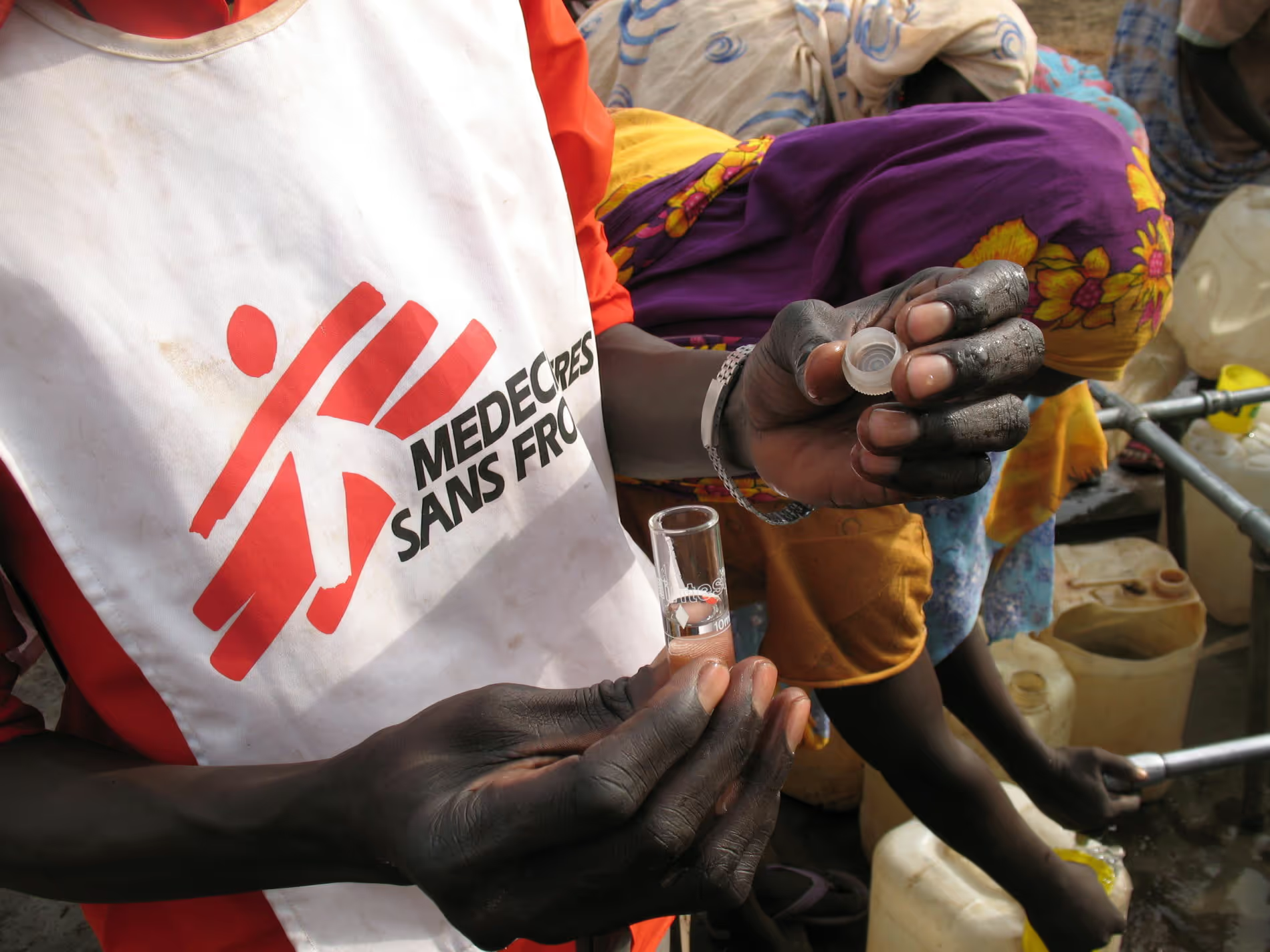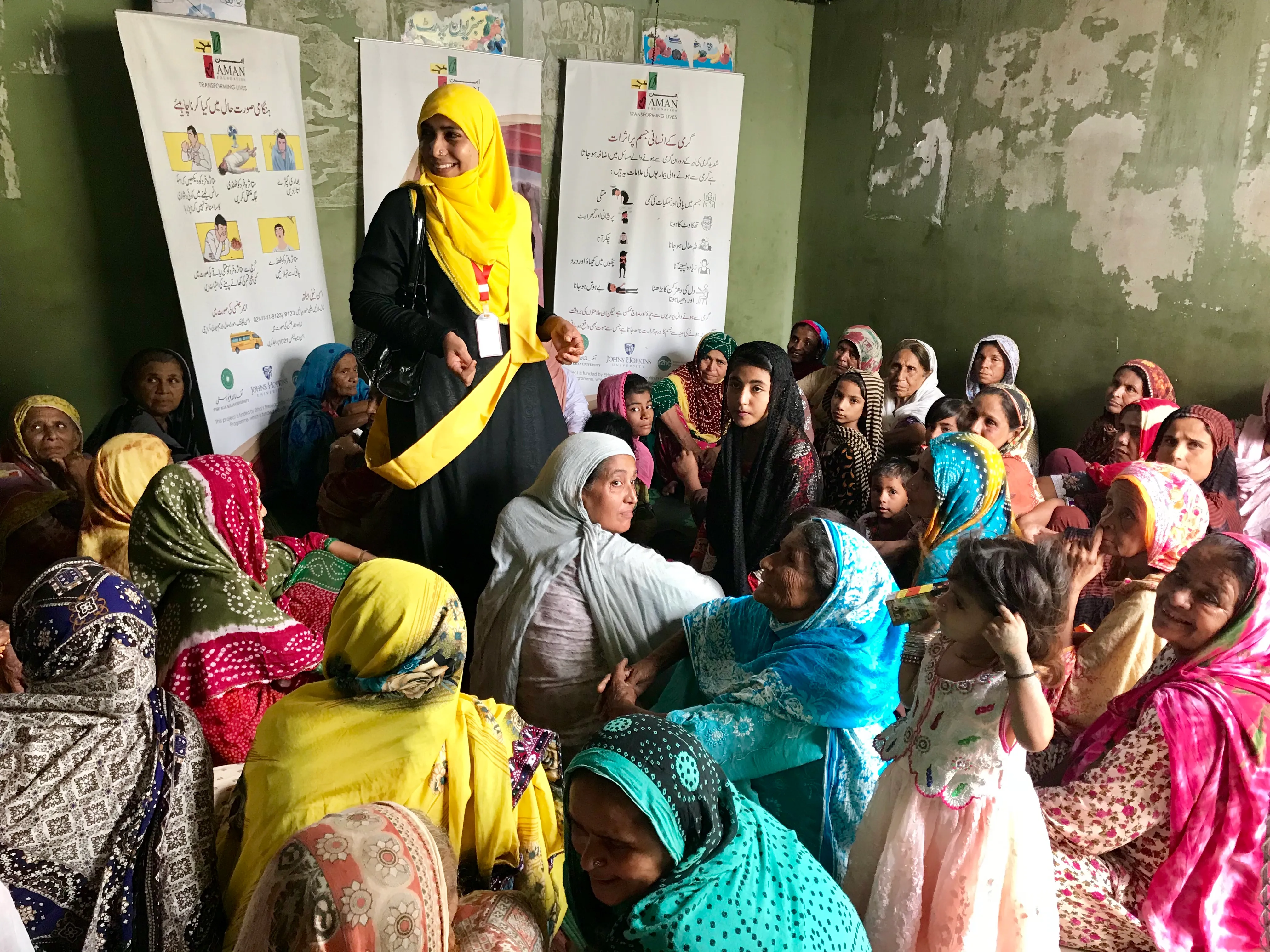Stepping towards water quality guidance for intensive therapeutic feeding centers

Since the summer of 2018, a group of medical, nutrition, and water engineering experts at the Dahdaleh Institute for Global Health Research and MSF have come together to investigate, for the first time, the problem of chemical water quality and the recovery of children with severe acute malnutrition in intensive therapeutic feeding centres.
Presently, field workers have no guidance on allowable chemical water quality in intensive therapeutic feeding centres (ITFCs). This is despite the known sensitivity of children with severe acute malnutrition (SAM) to electrolyte and mineral intake. In response to this gap, our team has been working to synthesise available knowledge from multiple domains – paediatrics, nutrition, water quality, risk management – in order to generate provisional chemical water quality guidelines for ITFCs.
To do this, we have adapted the standard water quality risk assessment approach from public health to the unique context of paediatric SAM patients in ITFCs. Water quality risk assessments typically follow a four-stage process:
- Hazard identification
- Toxicity evaluation
- Exposure assessment
- Risk characterisation
In the first step, we identified the relevant chemical water quality parameters we need to be concerned about during the treatment and recovery of SAM children in ITFCs. Through an iterative process of examining field water quality data and the physiological and metabolic roles of these water quality parameters, we generated a “long list” of 25 parameters for further investigation.
Our next step was the exposure assessment. For us, this meant creating an ITFC exposure assessment tool. This took the form of a spreadsheet-based calculator that computes the total exposure patients in ITFCs receive under various clinical scenarios from all intake pathways (for example: drinking water, F75, F100, ready-to-use therapeutic food, oral rehydration solutions, and breastmilk) for the 25 parameters on the long list.
We used water quality data from ITFCs in Ethiopia to model the influence of water quality on overall exposure. We compared calculated exposures to upper limits of intake for the general paediatric population (from United States Environmental Protection Agency and WHO sources) in order to refine down to a short list of six parameters. These six of “greatest concern” in ITFCs are: sodium, magnesium, sulphate, nitrate/nitrite, renal solute load, and osmolarity.
One of the essential parts of risk assessment is to evaluate the toxicity of the parameters of concern. In our case, this meant figuring out at what intake levels various chemical water quality parameters begin to cause adverse health effects in the paediatric SAM population. We initially used intake limits for the general paediatric population, but we wanted to get one step closer.
To help guide us, we established anexpert panel of world-leading medical authorities on paediatric malnutrition whom we brought together for a meeting in Toronto in November 2018.
With guidance from the expert panel, we found that very little is known about upper limits of intake for the paediatric SAM population. In order to bring together what is known, we carried out a systematic literature review of the grey and published literature on upper intake limits for the paediatric SAM population, for the six parameters of greatest concern.
Systematic reviews are resource-intensive exercises, so we restricted the systematic review to just the short list of six, rather than the long list of 25 parameters, which would have proved unmanageable within our timeframe. We are just in the process of finalising the systematic literature review now.
The final stage in the risk assessment approach is an integrative step tocharacterise risk and generate guidance. To facilitate this, we are compiling everything we have learned about the six parameters of greatest concern into an Evidence Matrix.
The expert panel will integrate the matrix in order to propose provisional upper limits of intake for the paediatric SAM population, on the basis of best-available current evidence. The information that the matrix compiles includes:
- physiology,
- upper intake limit data uncovered through the systematic literature review,
- recommended daily intake information,
- expert opinion, and
- other pertinent information.
This final integrative step will proceed through summer 2019, by the end of which we aim to produce our final outcome: provisional guidance on allowable chemical water quality in ITFCs.
But we have already started to share what we have found so far in our investigation through:
- Presenting two posters: at the International Association of Hydrogeologists Geochemistry and Health Meeting (London, November 2018) and at the Médecins Sans Frontières Scientific Days Conference (London, May 2019).
- Given an oral presentation at the Médecins Sans Frontières Paediatrics Days Conference (Stockholm, April 2019).
- Scheduling a presentation at the Emergency Environmental Health Forum (Geneva, June 2019)
- Being invited to deliver an oral presentation at the 11th European Congress on Tropical Medicine and International Health (Liverpool, September 2019).
Something profound happened when we presented our work at the MSF Pediatrics Days event in Stockholm last month. Lots of people had positive feedback on how timely the work is and how surprising it is that something so essential could be overlooked.
But one person came up with tears in his eyes to Saskia van der Kam, our team member presenting the work, after her presentation. He was the MSF doctor in Somalia during the nutritional crisis in 2007 who first rang the bell about water quality in ITFCs. Finally, at long last, someone was looking into this problem concretely.
It was incredibly heartening for us to see that our research work, enabled by the HIF, was really resonating with field workers and helping to address real humanitarian health challenges.
This is exactly what we set out to do. We have been deeply humbled and energized by the feedback we have received as we’ve been presenting the work. Now, we’re on to the last piece: publishing the work and getting the new provisional ITFC water quality guidance out there!
Stay updated
Sign up for our newsletter to receive regular updates on resources, news, and insights like this. Don’t miss out on important information that can help you stay informed and engaged.
Related articles



Explore Elrha
Learn more about our mission, the organisations we support, and the resources we provide to drive research and innovation in humanitarian response.